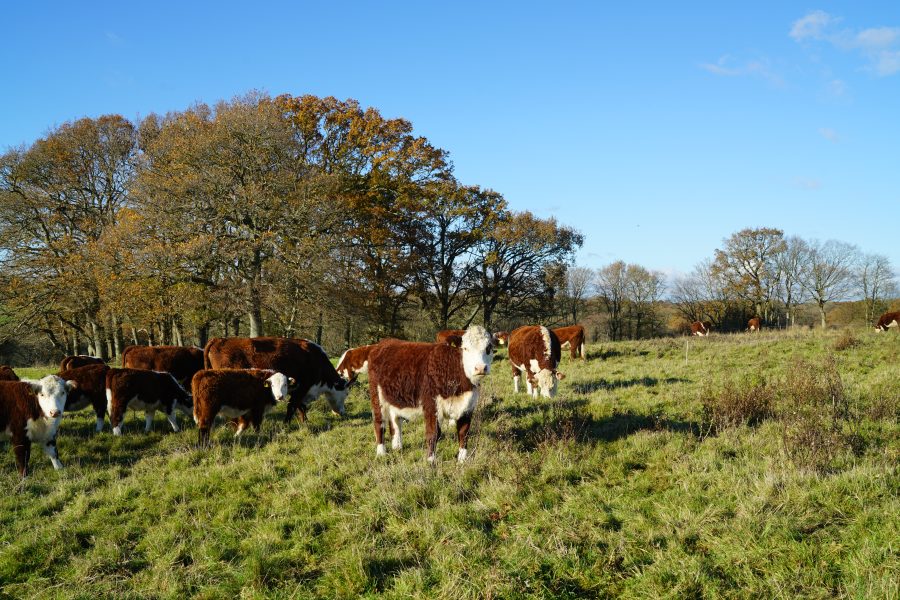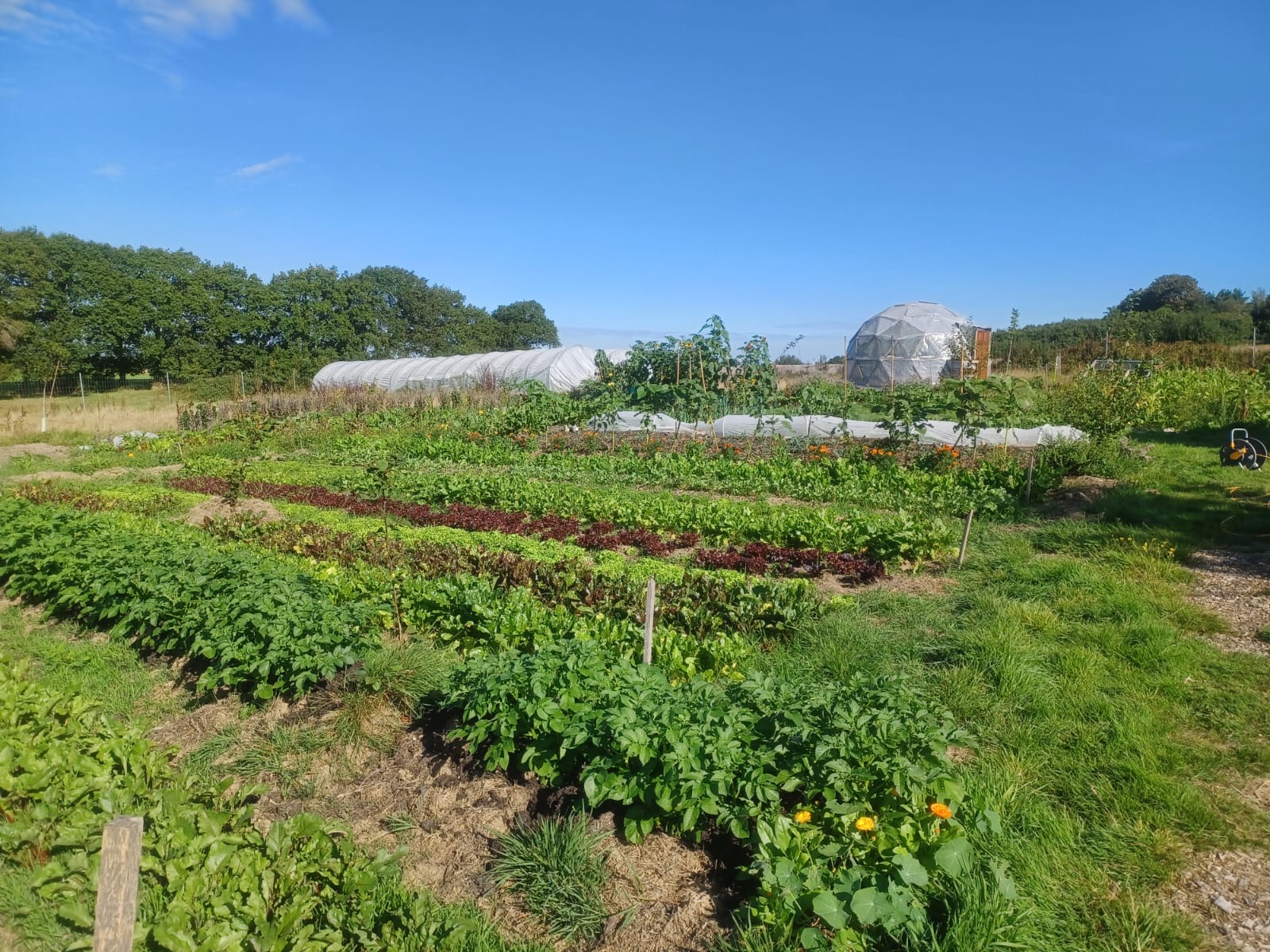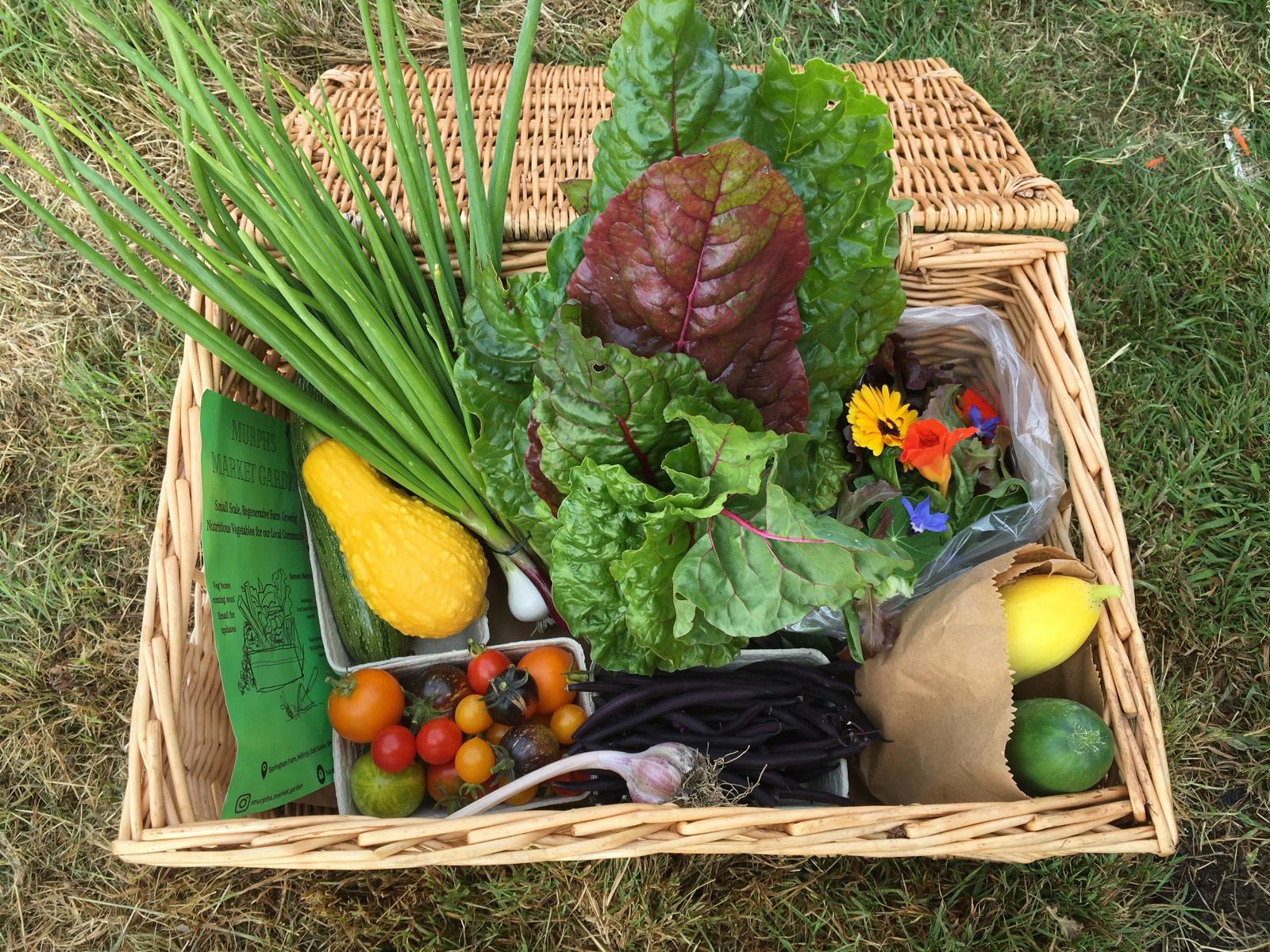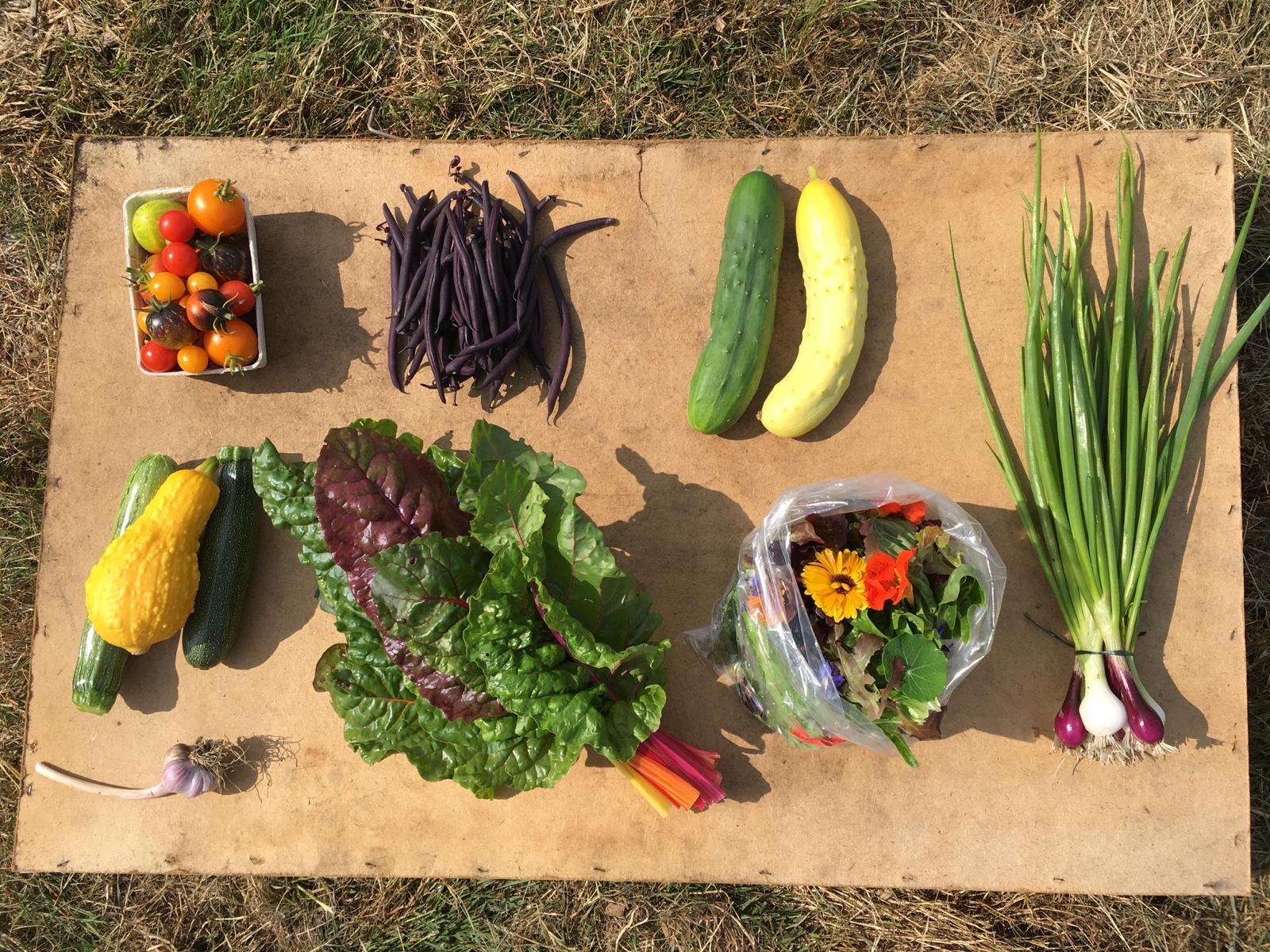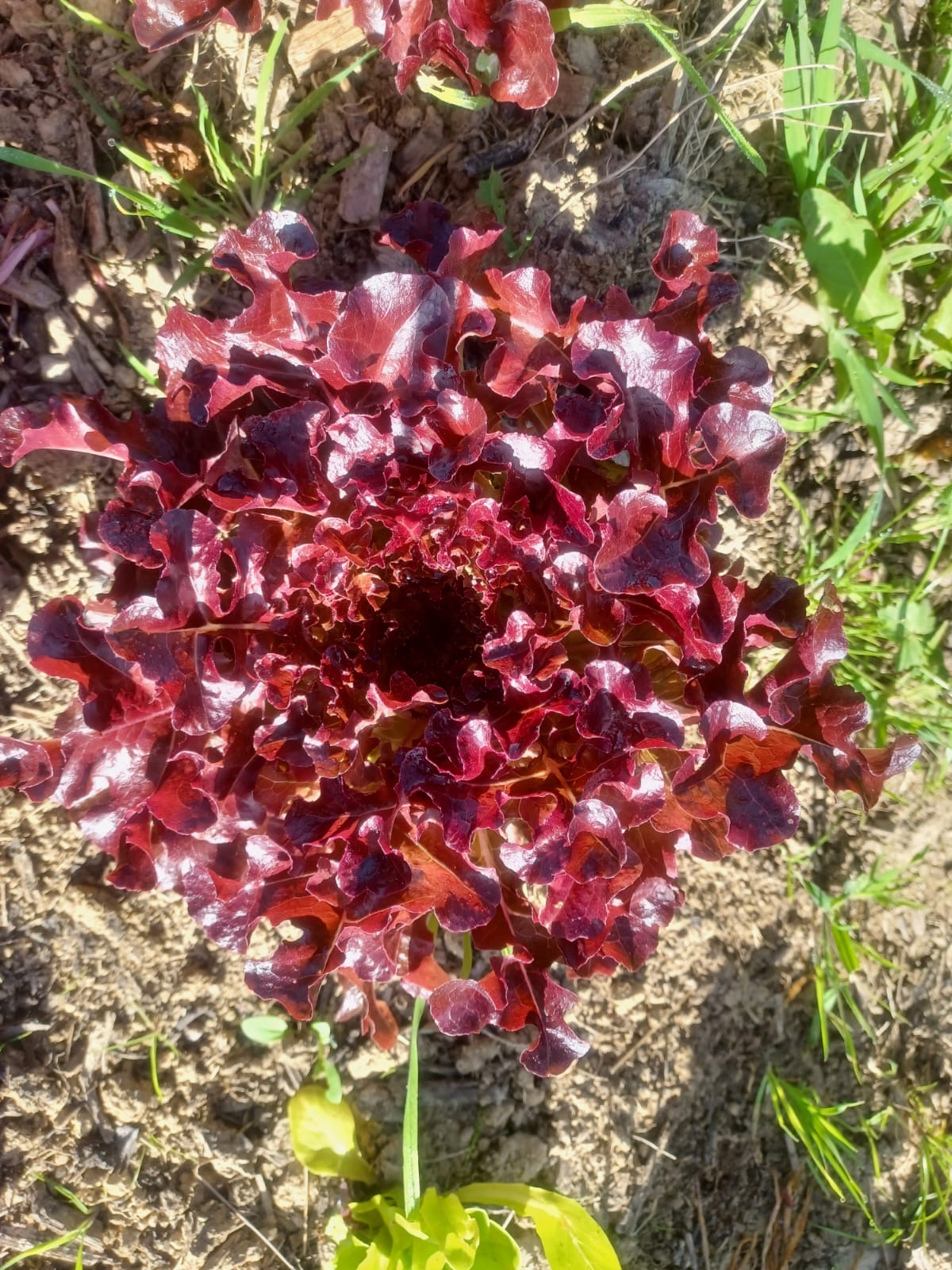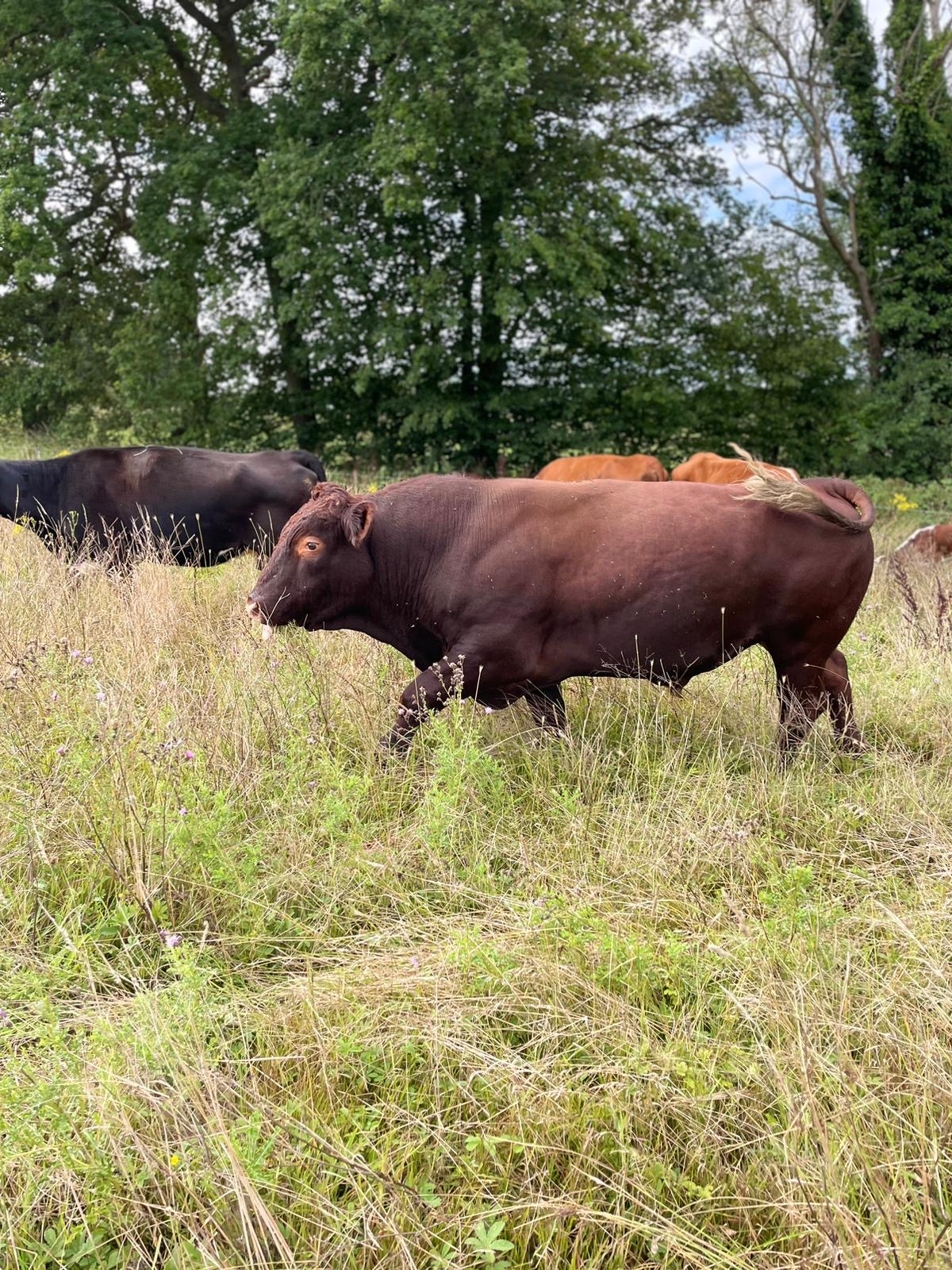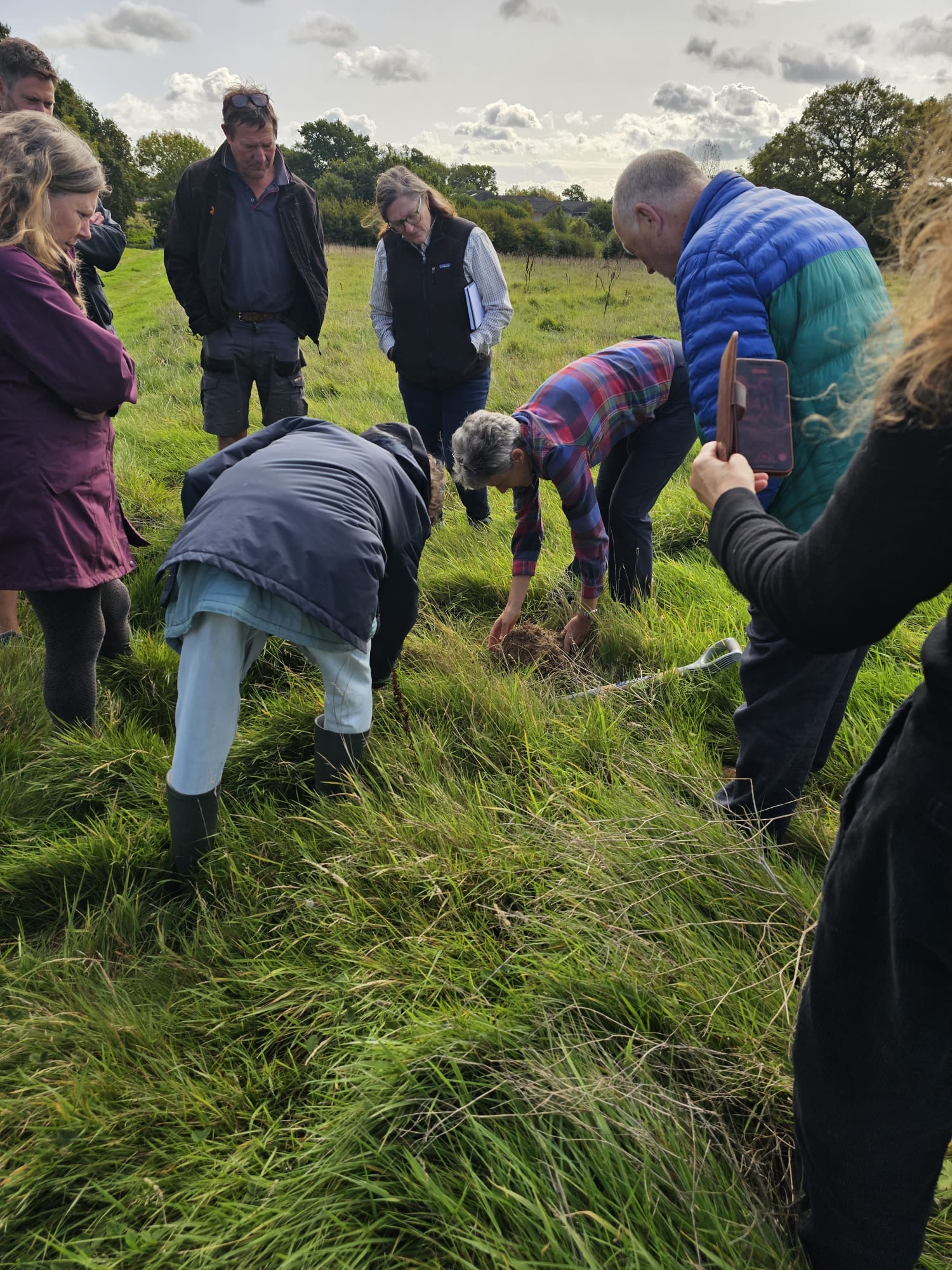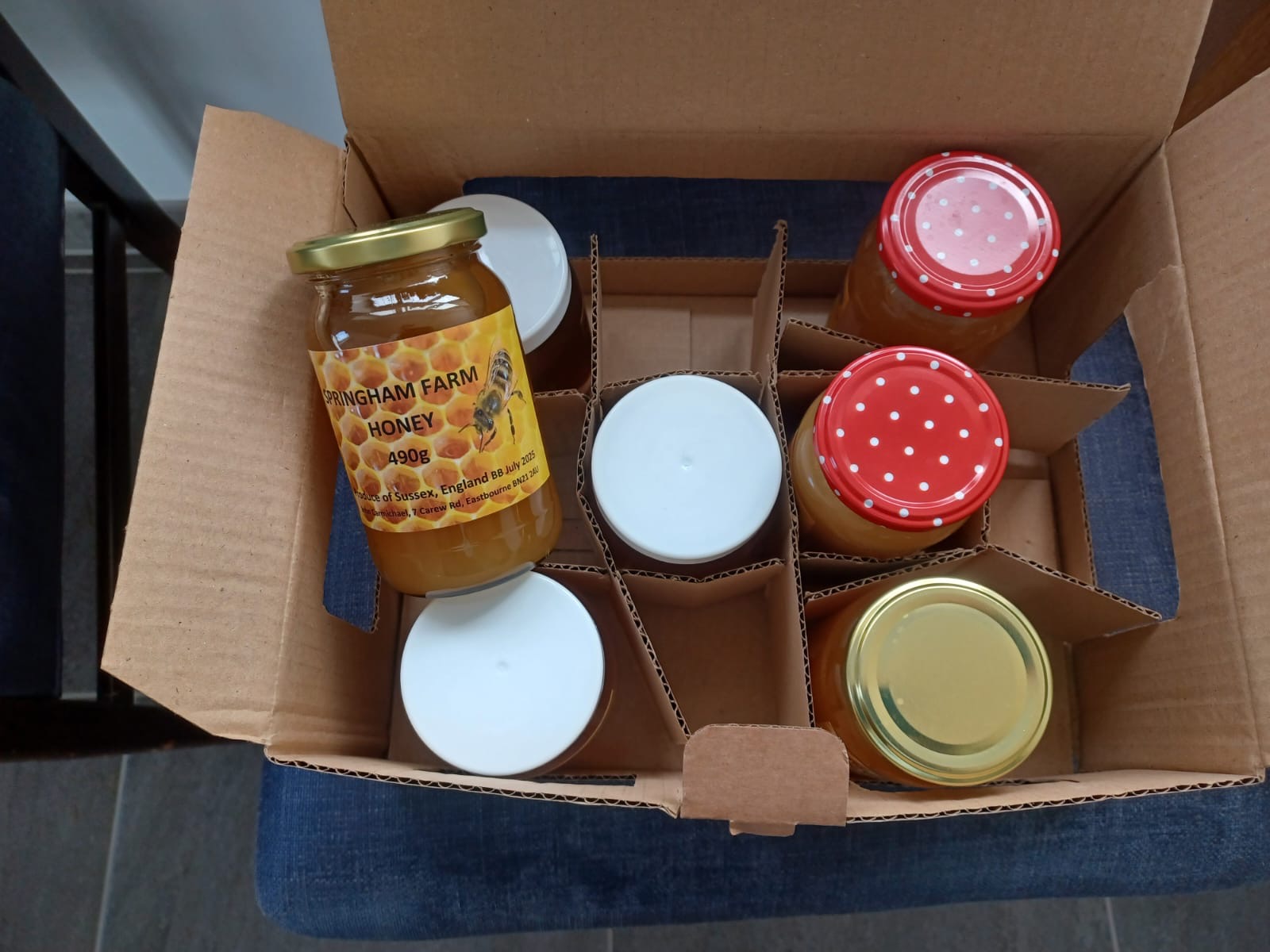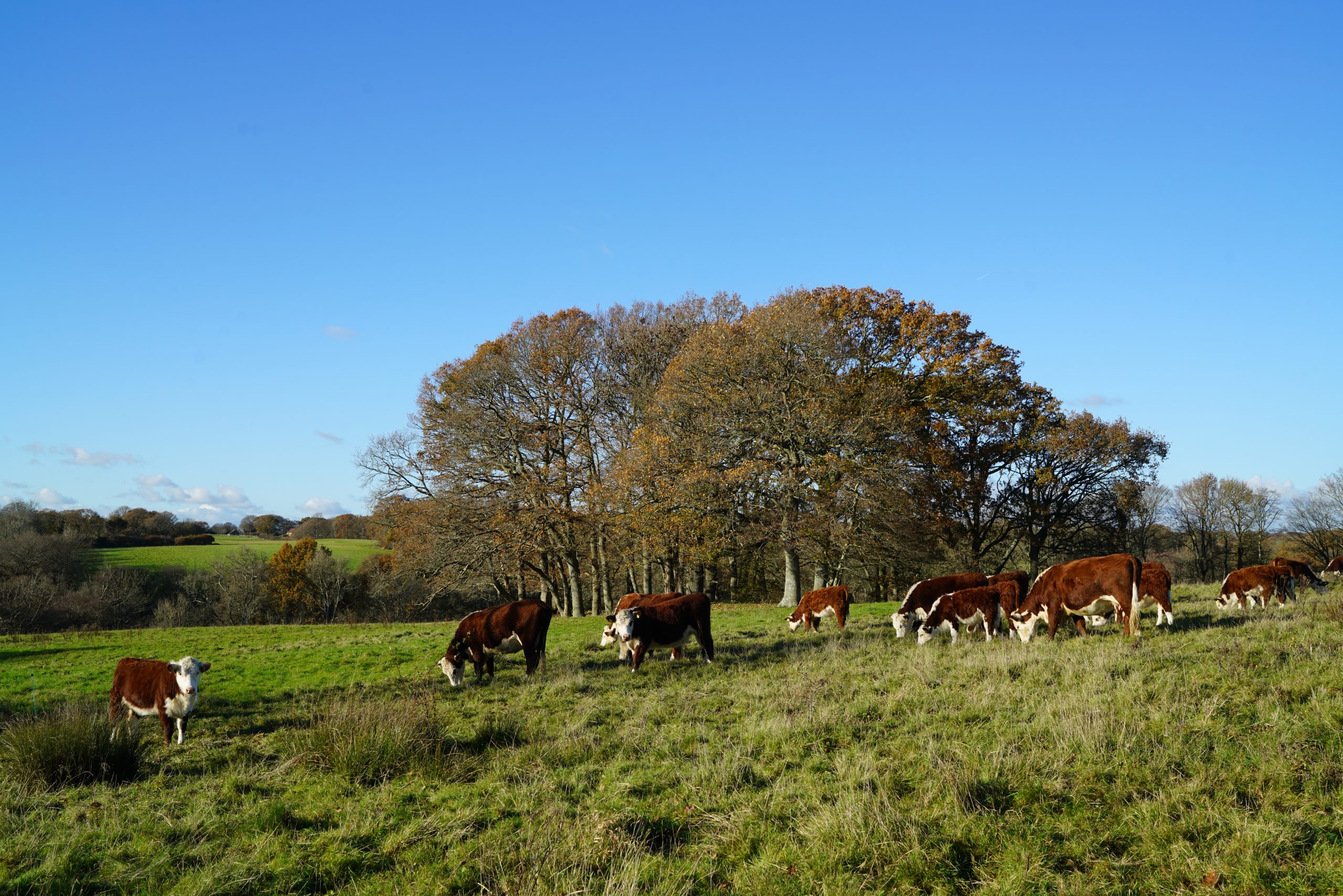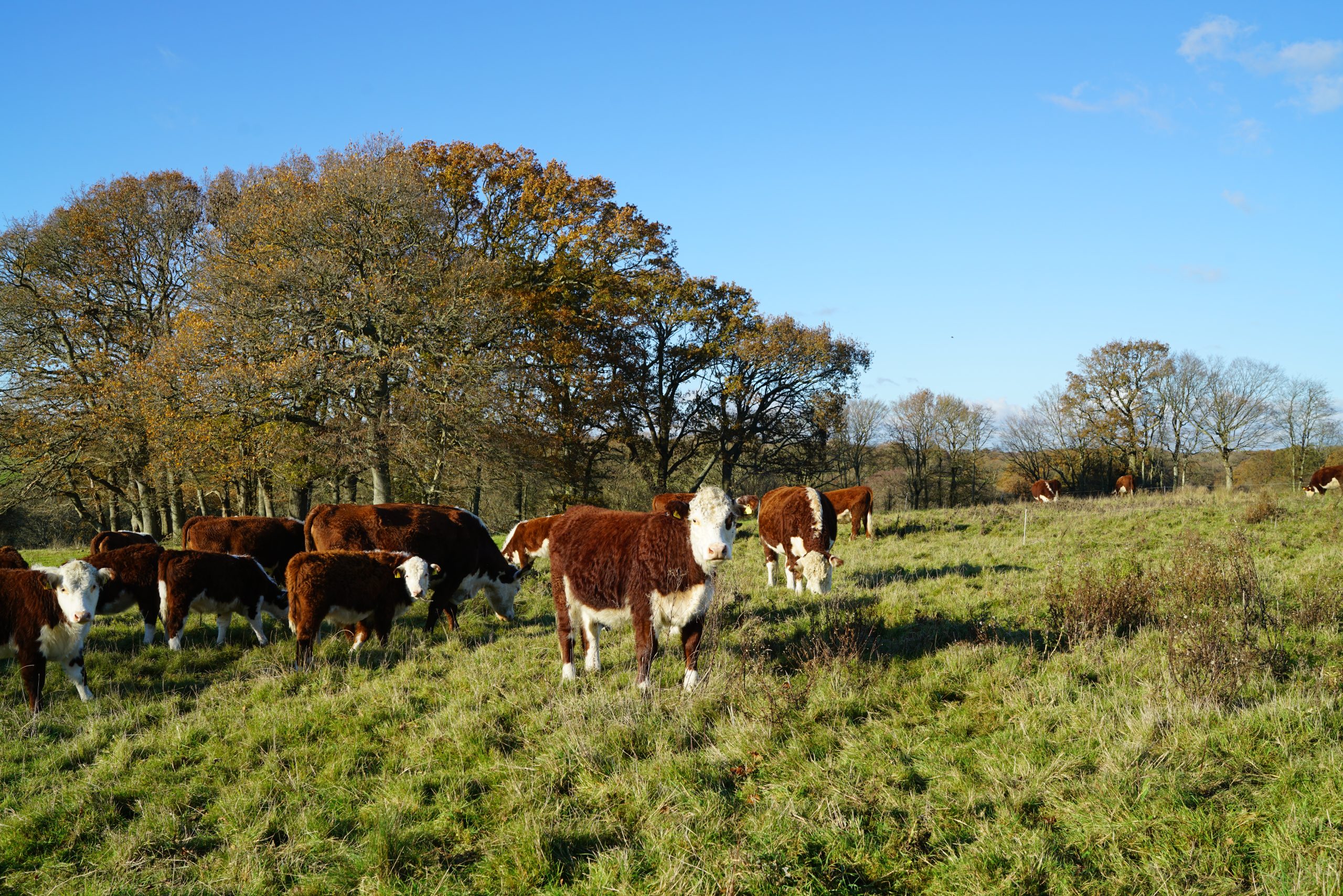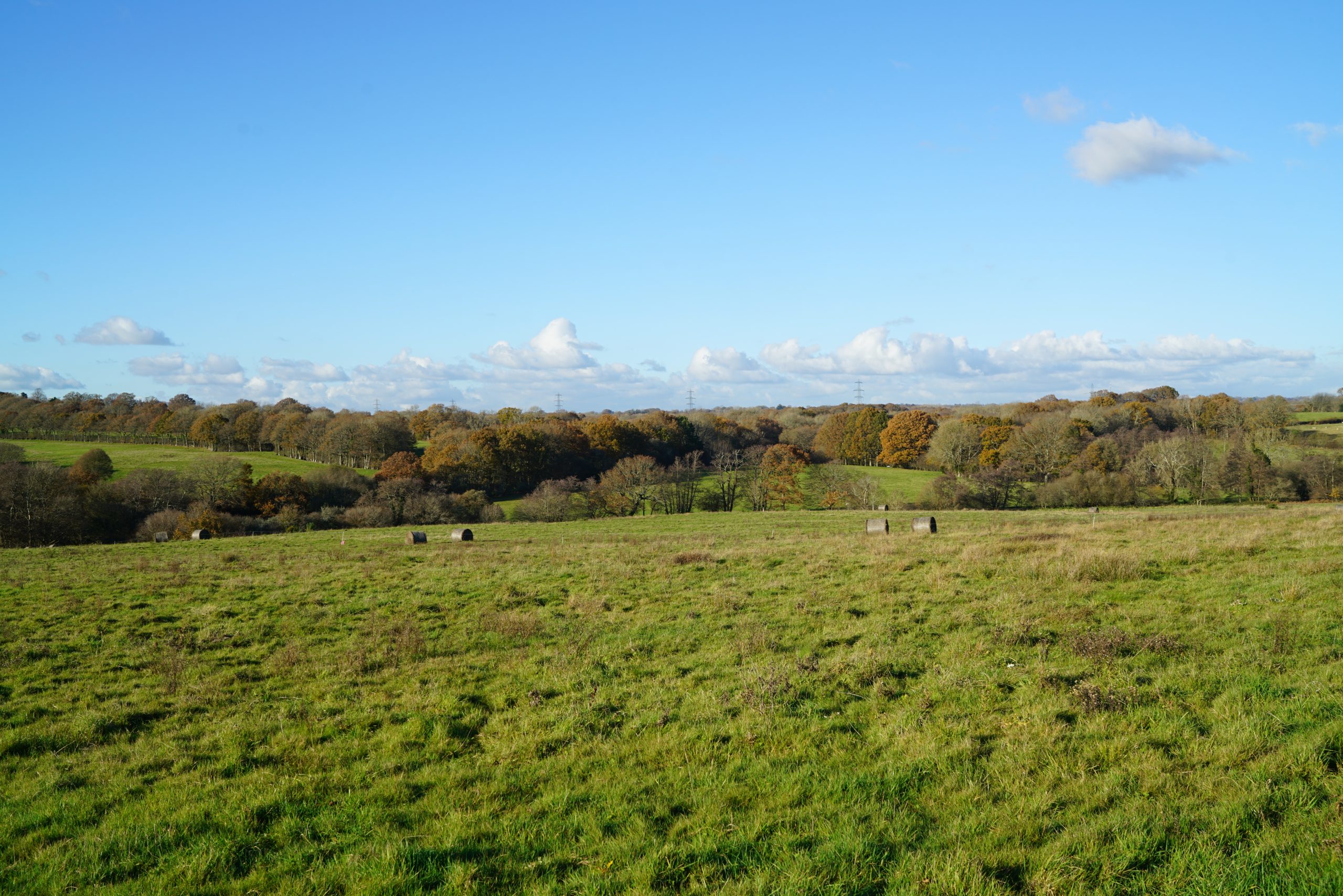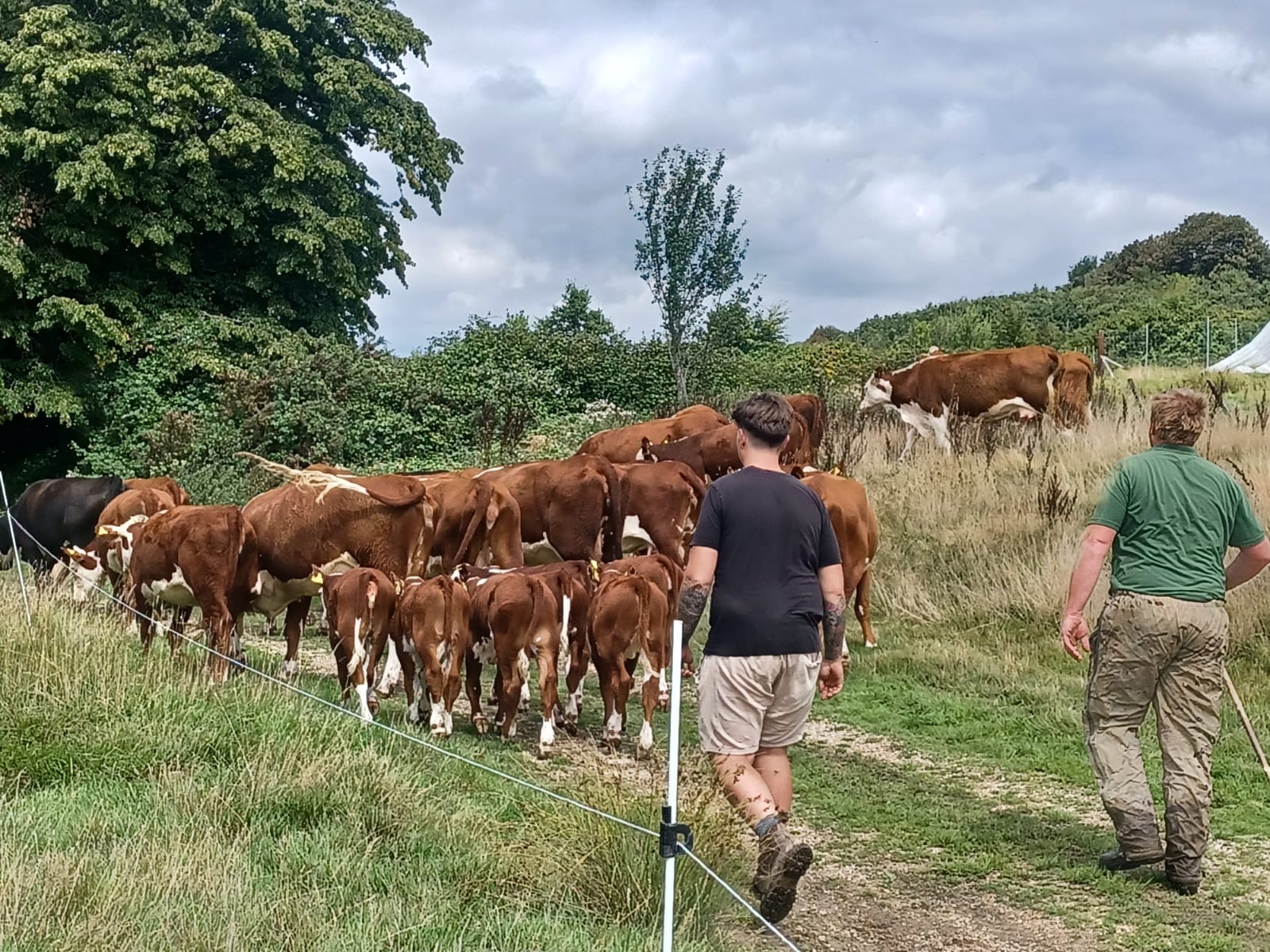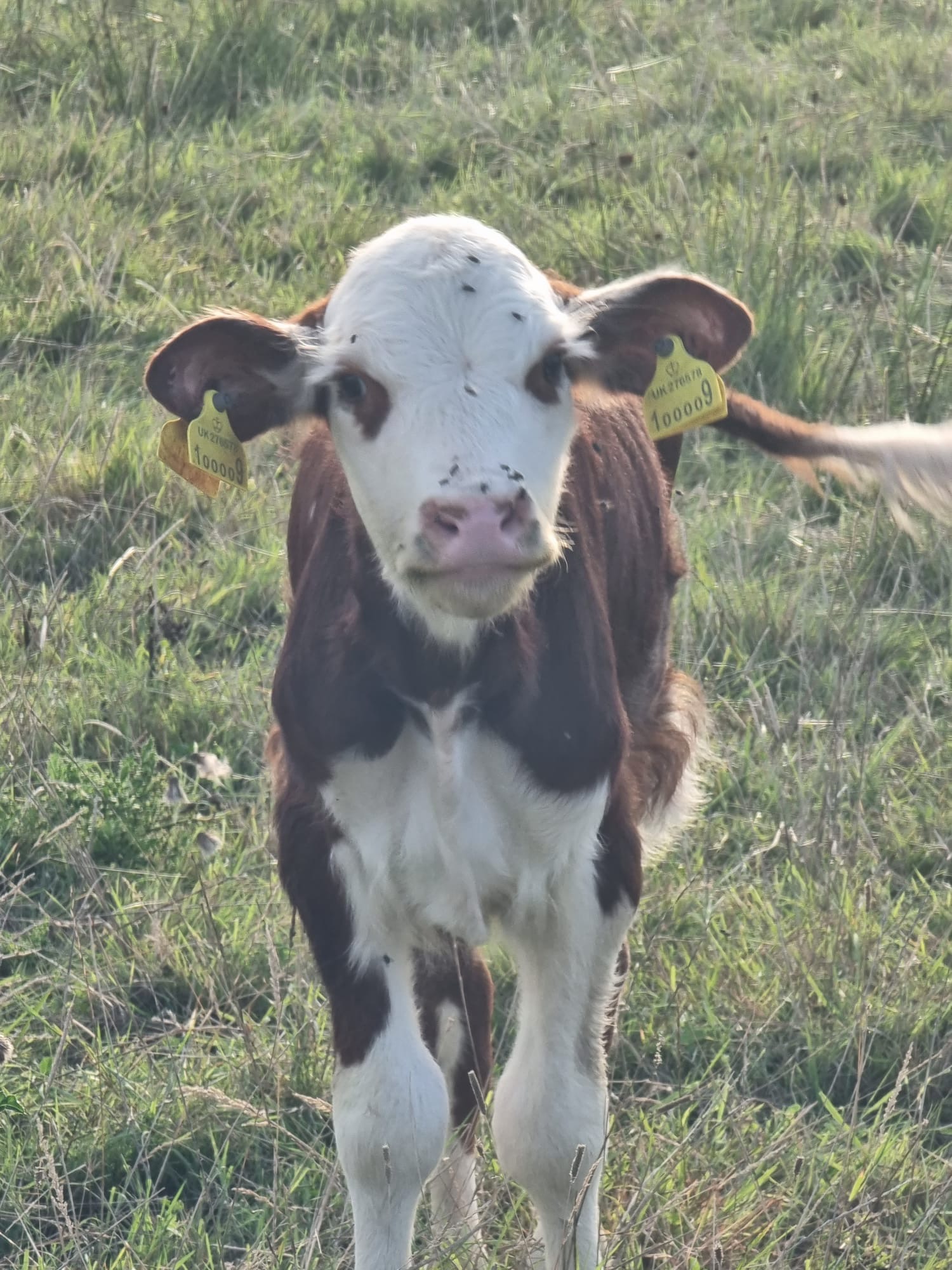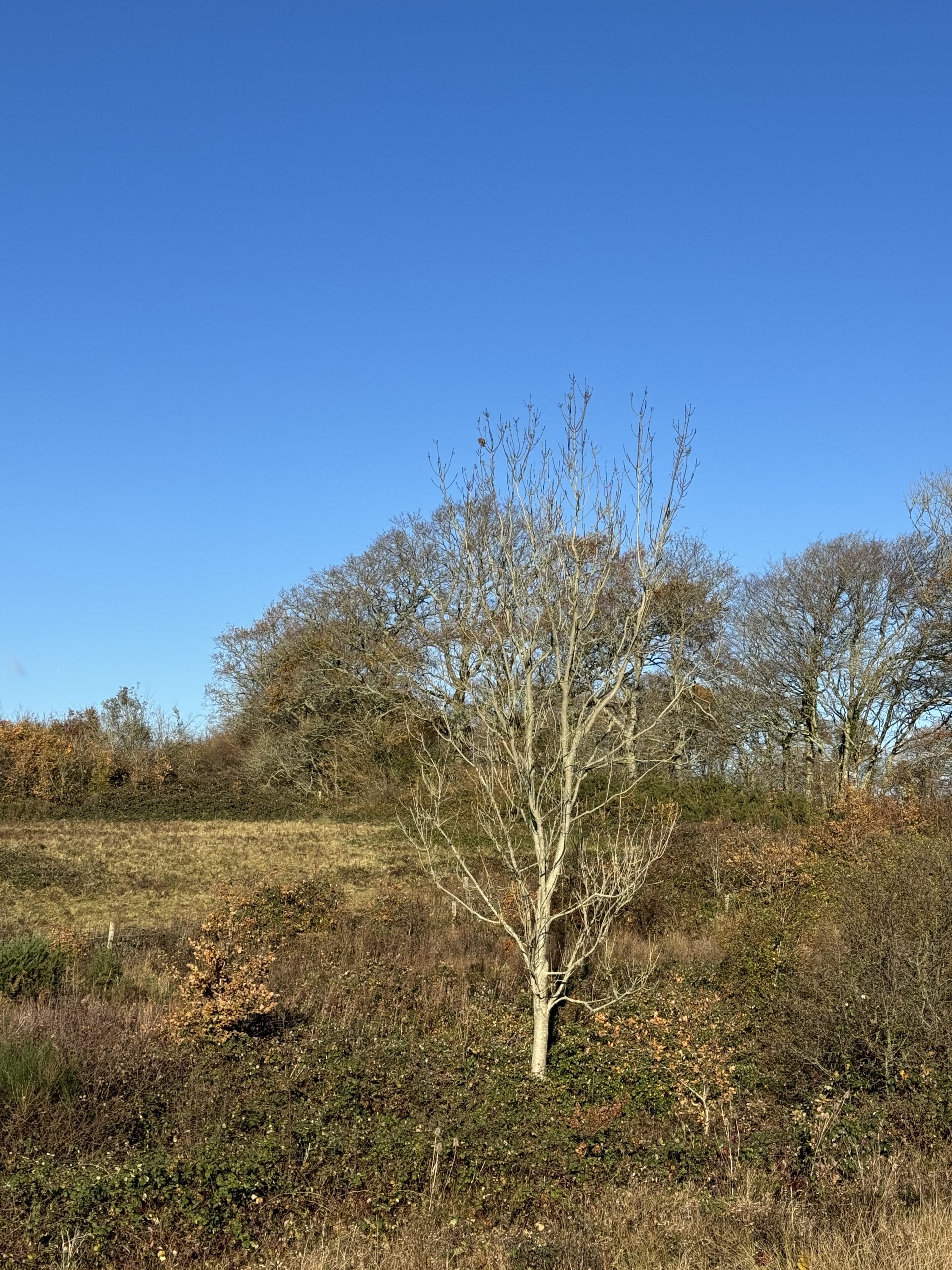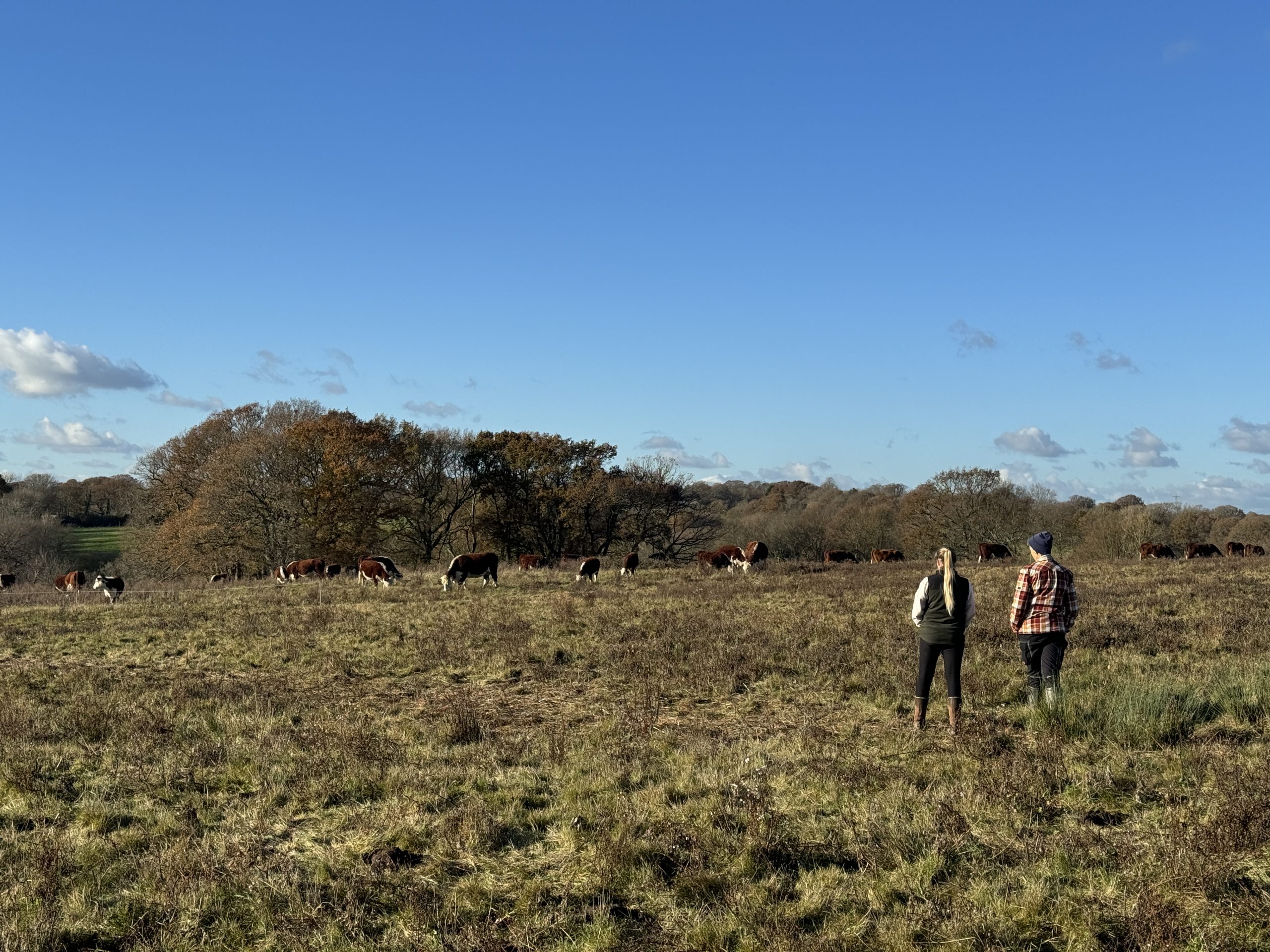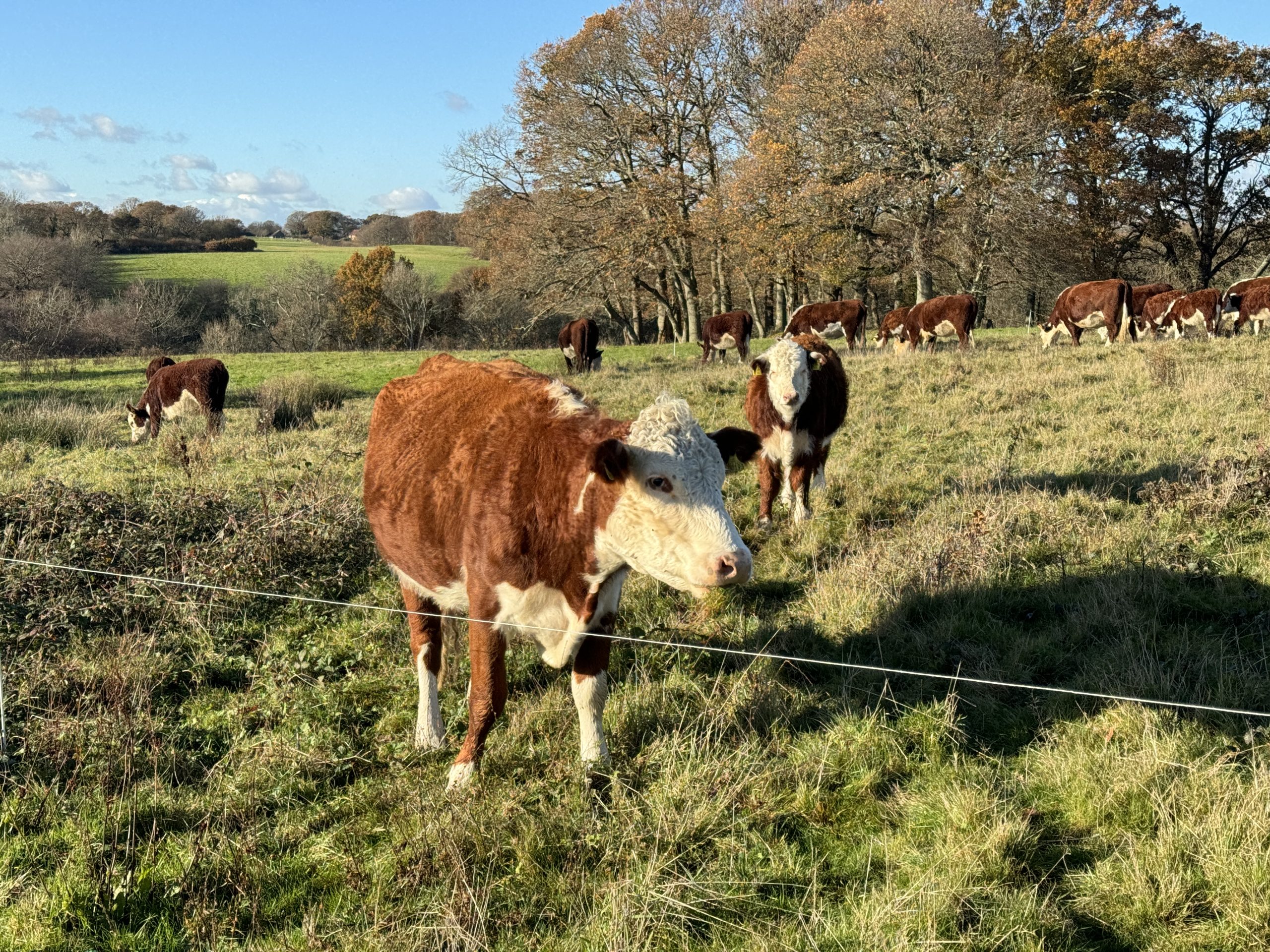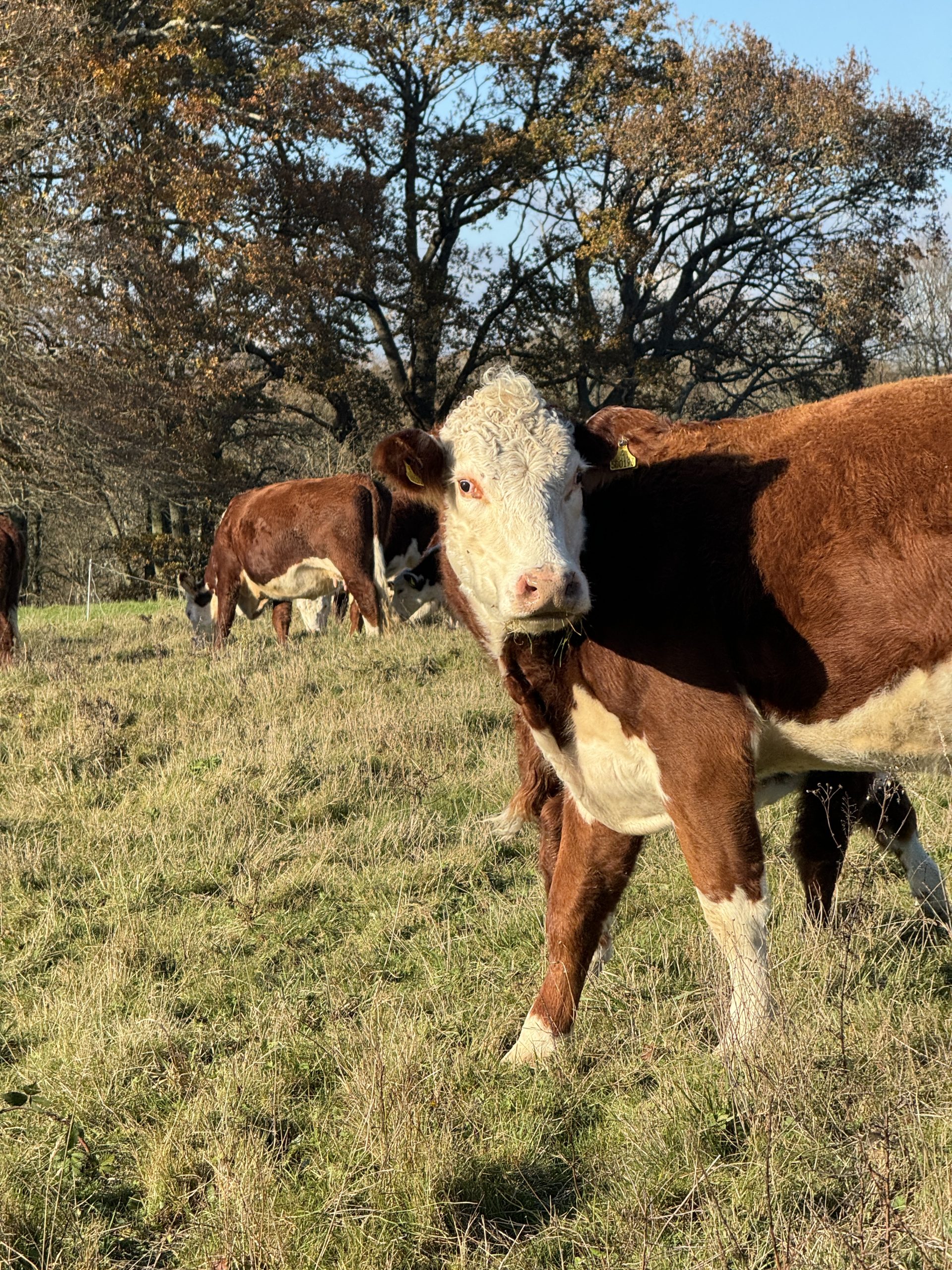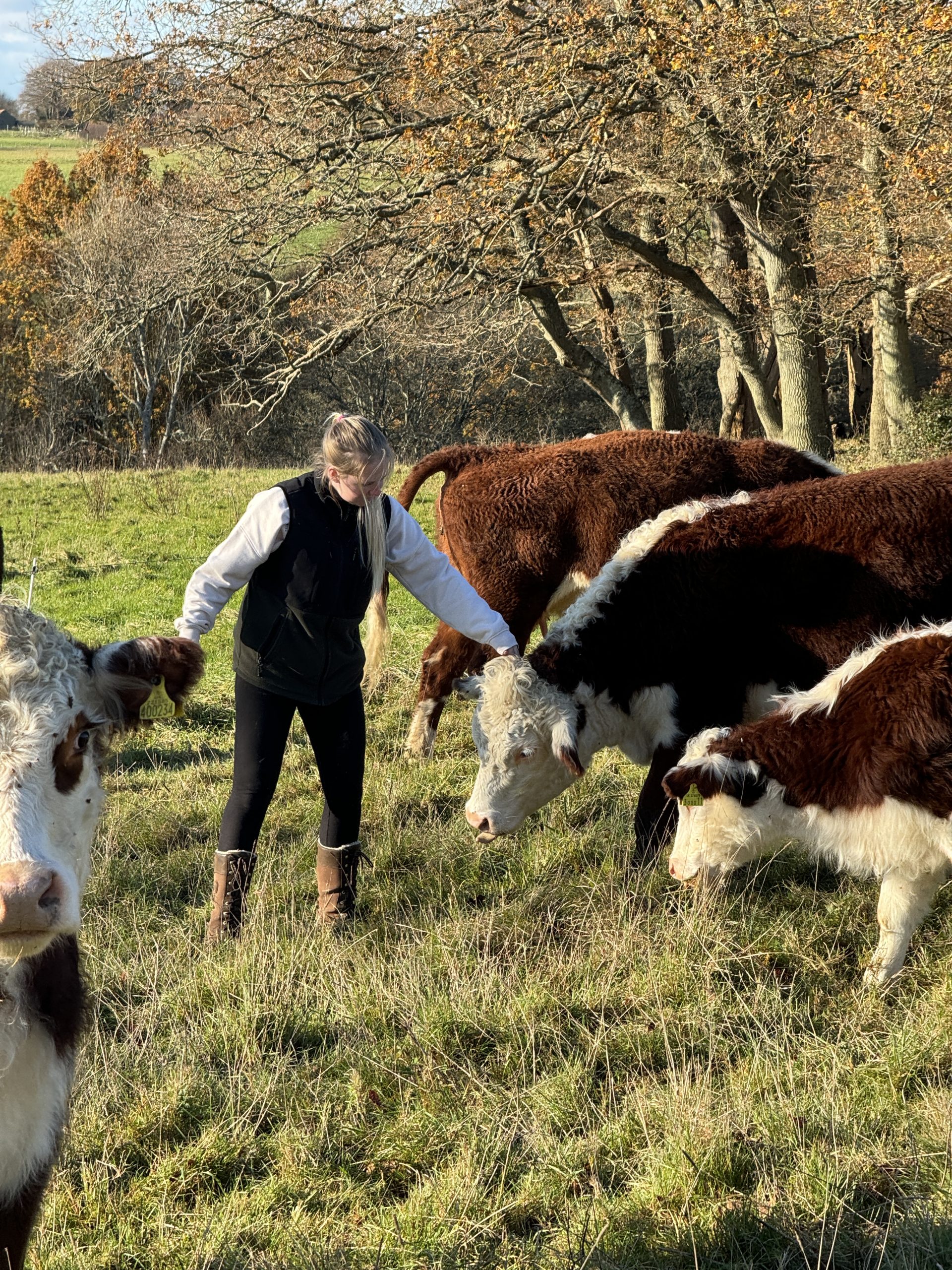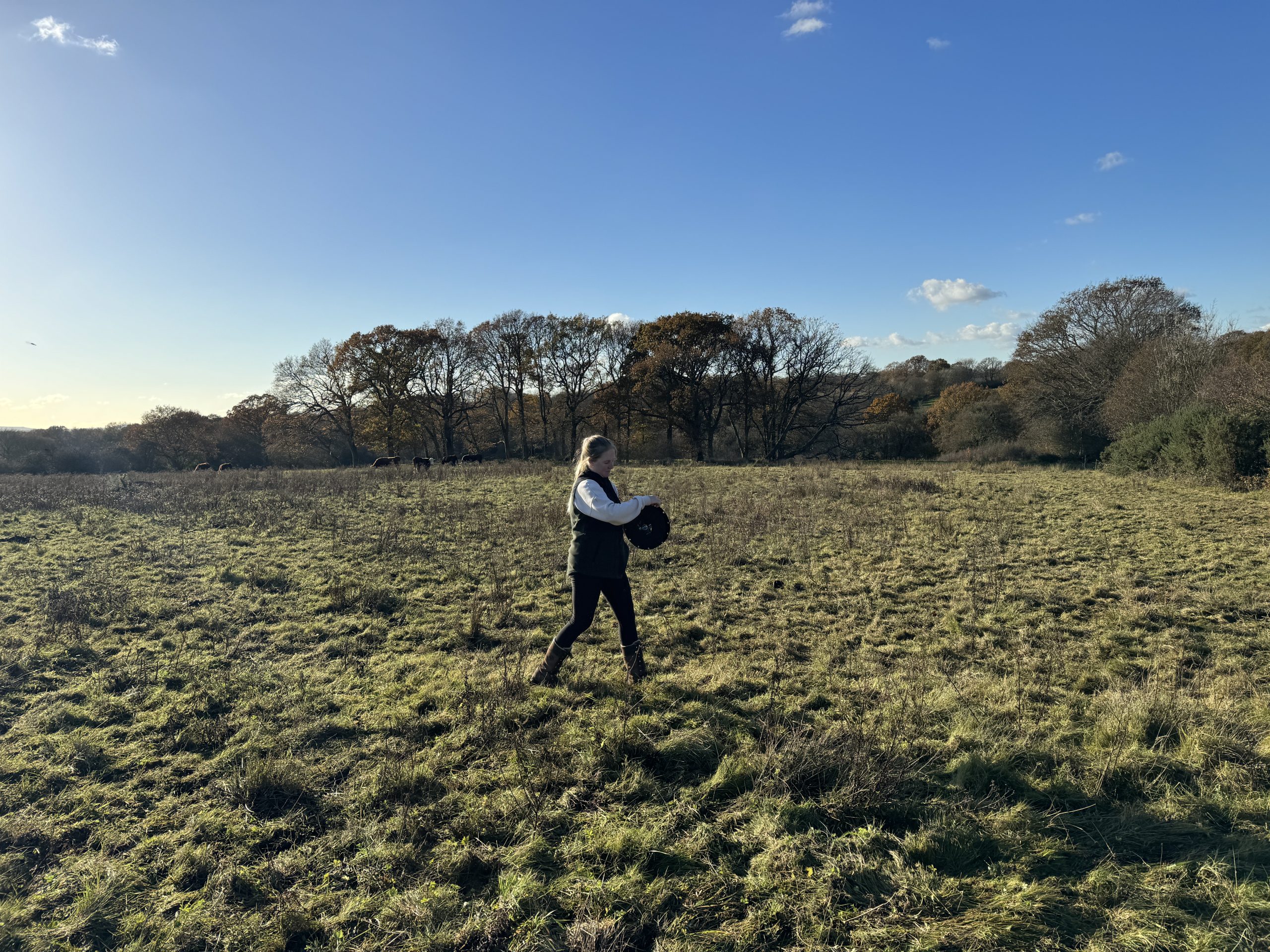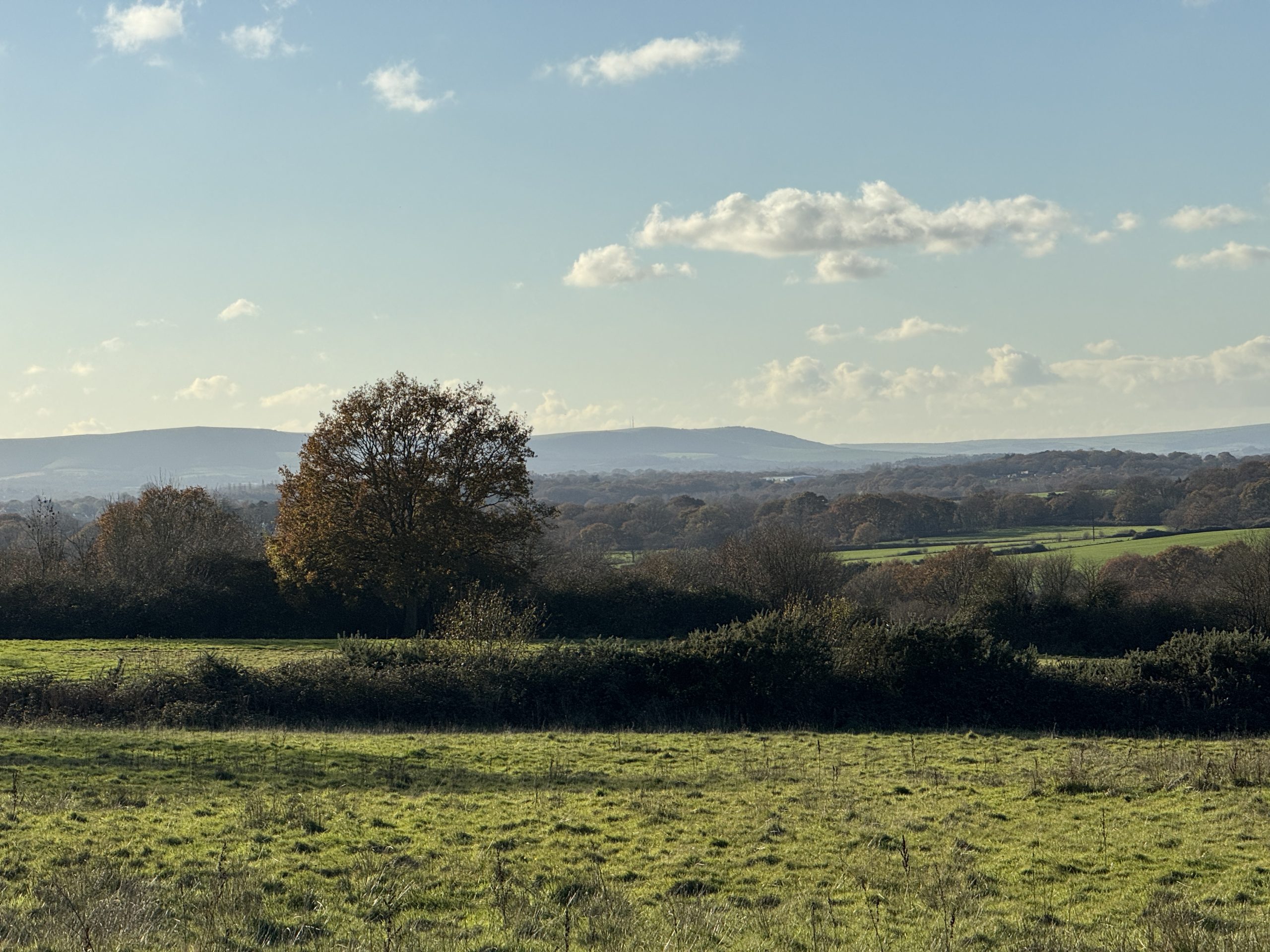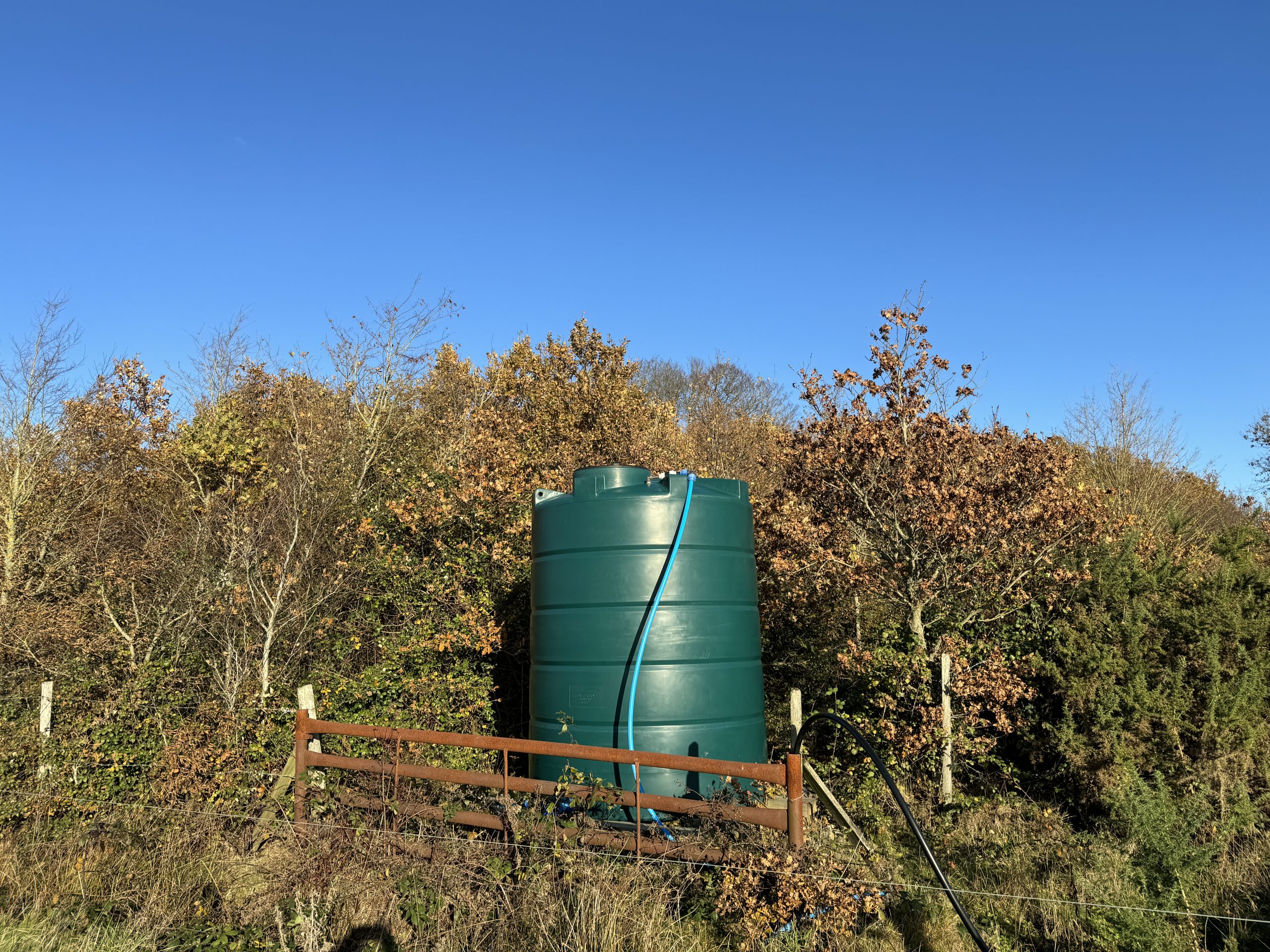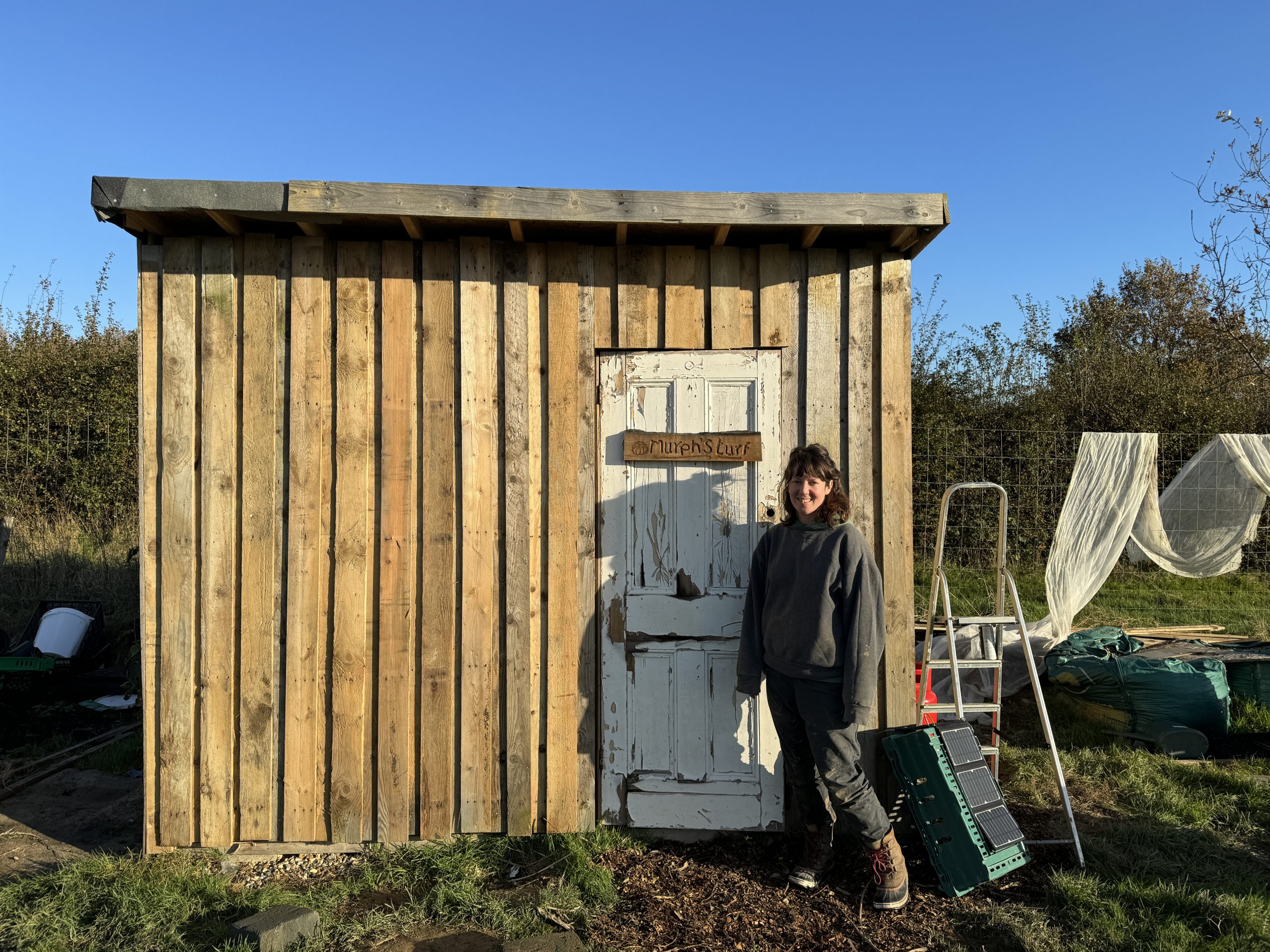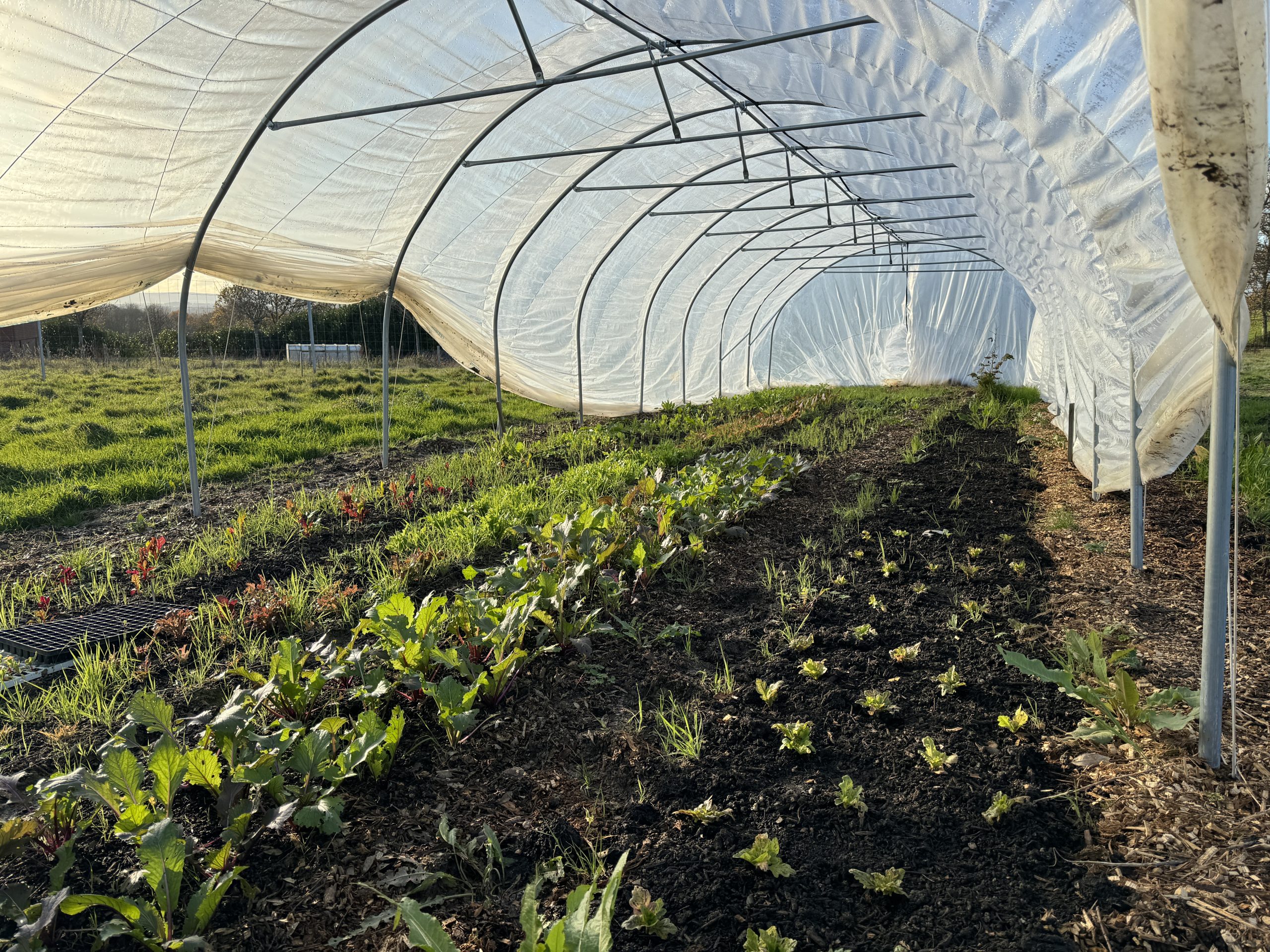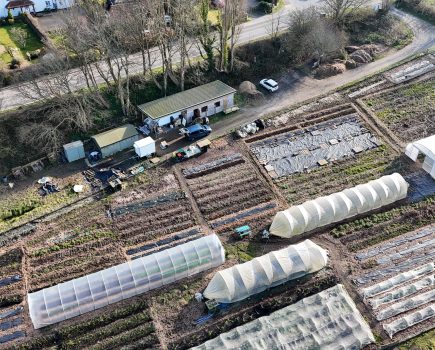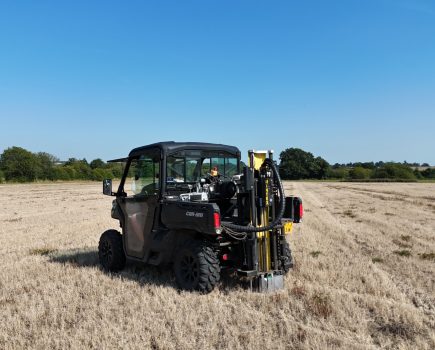Nigel Akehurst visits Springham Farm in Hellingly, East Sussex, to meet the team behind an innovative land-based project that combines philanthropy, regenerative farming, food growing, nature restoration, education and community building.
Springham Farm is just north of the pretty village of Hellingly, which is bordered by rolling Wealden countryside to the north and South Downs National Park to the south. Arriving off the main Grove Hill road that leads to Horam, I follow the farm track around and park up in the farm yard.
There I met Christine Meadows, who has managed the project since its inception in December 2020, when the land was purchased by The Biodynamic Land Trust through the efforts of Roger Ross and
Susie Scott, who are now the partners running the farm tenancy through Springham Grove LLP.
Regenerating and rewilding the land
A land use plan was drawn up in June 2021 to regenerate and rewild the land, said Christine. To improve the soil health and biodiversity of the permanent pasture, the team decided that employing cattle and holistic planned grazing would be the best course of action.
As the existing fencing and water infrastructure was not fit for purpose, Christine secured funding from the Green Recovery Challenge Fund Plantlife Meadow Makers project to help pay for the installation of semi-permanent electric fencing and mobile water infrastructure. Plans were also put in place to allow the existing hedgerows to widen out, expand some of the stream woodlands and create a wet woodland area providing more habitat for nature. A site near the farm entrance was also identified as a suitable location for a market garden.
Once all the fencing and water infrastructure was put in place by local contractor Stag Fencing, an agreement was struck with two local cattle farmers, David Cornforth and Fergus Henderson, who pooled their two herds and moved them to Springham, creating a super mob of around 180 zero input cattle, moved daily.
This agreement worked well during 2021 and allowed the team at Springham to gain a better understanding of electric fencing and holistic planned grazing. It also allowed a period of observation to learn more about the carrying capacity of the land and what type of cattle might suit it in the longer term.
In 2022, the team at Springham decided to buy their own livestock. After a couple of false starts with small groups of Longhorns and Aubrac crosses, Christine found a more suitable herd of low-input Hereford cows and calves being sold off a Pasture for Life farm in Norfolk. Roger invested in 34 cows and followers. Completing the herd, they purchased their own Sussex Bull, Samson, from local pedigree breeder Jayne Duveen.
To look after the herd, new entrant farmers Stephen and Zoe Bell, along with their two young children, moved into the farmhouse at Springham this summer.
Stephen Bell is also the leader of the successful fencing and forestry business Stag Fencing. Between them, Stephen and Zoe keep a close eye on the cows, setting up new paddocks, rolling out hay bales and moving the herd regularly.
On the day of my visit, Christine, Zoe and I took a walk out to see the herd. I was impressed by the ground condition, which was holding up well considering the vast amounts of rain we have had. The majority of the cows and calves had their heads down, happily grazing the thick thatch of grass. Christine commented that they were giving them larger paddocks to help minimise any compaction and moving them every day or twice a day.
Zoe pointed to the rows of hay bales dotted about in each field which they unroll (with the aid of a machine) to provide supplementary bale grazing for the cattle.
This also helps keep the cattle out for as long as possible, one of the key aims of holistic planned grazing. Christine added that they only had to bring them inside when the ground conditions become too bad and hope to do the same again this year.
With the Herefords settling in well, Christine said the goal now was to increase the number gradually to around 50 cows plus followers, which she feels would be the maximum number the land could support. She would also like to reduce the size of the cows to closer to 350kg, which she feels would allow them to stay out on their heavy clay soils for longer.
In terms of outlets for finished steers, instead of direct selling themselves she says they are keen to supply existing farmers already direct selling their animals.
As we walk back to farm yard, I am struck by the beauty of the landscape, with its wild hedgerows, network of old fishing ponds and areas of scrub, all providing vital habitat for nature while still producing quality food in the form of beef.
Market Garden
Nearing the farm entrance, Christine and Zoe dropped me off at Murph’s Market Garden, where I met Rachel Murphy. A trained physiotherapist, Rachel explained that she found her passion for growing food after working on small organic farms in New Zealand and more recently in the UK.
At the beginning of 2023 she decided to take the plunge and start her own food-growing business at Springham Farm on a half-acre plot. She grows a mixture of leafy greens, tomatoes and root veg, selling the majority of produce direct through veg boxes and at local farmers’ markets.
This year’s growing season was “tough going,” she said. After a slow start due to a cold and wet spring she was hit with wireworm, slugs and weeds. High winds were also a problem for her polytunnels, which she has now moved to a more sheltered spot.
When I visited, Rachel was working on completing her tool shed using recycled wood, and next year hopes to expand her veg box customers to around 20 families and support regular markets at the Gun Brewery and in St Leonards, Hastings.
Philanthropy, Land Trusts and building community
To learn more about the ownership structure and how Springham Grove LLP came into being, I later caught up with Roger Ross on the phone. He explained that after a successful 45-year career as an auctioneer and valuer, he was now in a position to help others.
“Often people don’t want to talk about what they give or don’t give but I don’t hide the fact, because I want other people to do it as well,” he said.
In the case of Springham Farm, rather than buying the farm himself he lent the money to The Biodynamic Land Trust to buy it, retaining management control as a tenant.
“We’ve got a Limited Liability Partnership (Springham Grove LLP) and then we need people to run the operations. I wouldn’t be doing it if I hadn’t known Christine Meadows and she had agreed to give five years to set it up,” he said.
I asked what inspired him to help buy Springham Farm. He replied that over the years he had given money to causes like the Soil Association and The Sustainable Food Trust. Then during Covid, when he turned 70, the opportunity arose and he decided he wanted to be connected to a piece of land and create a lasting legacy.
His vision for the farm is to create a beacon for nature restoration, biodynamic food production (which he believes is the highest quality food) and community.
Having seen organically farmed land sold when the owner died and then trashed, he wanted to safeguard Springham for future generations. This is why he believes Land Trusts are a good vehicle for landowners or wealthy individuals interested in preserving land and leaving a legacy.
He is passionate about giving young people access to land and runs an enterprise-stacking model at Springham, helping new entrants set up and subsidising their business until they reach breakeven, he explained.
“That’s another part of my philanthropic giving, helping people establish businesses that are really useful and necessary.”
For those interested in learning more about the model, Roger said he wa always happy to show people around the farm and is proud of what the team has achieved in a relatively short space of time.
He highlighted the Pasture for Life Pasture for Project scheme funded by Farming in Protected Landscapes. Springham is one of the mentor farms hosting “mentee” farmers keen to learn about their rotational grazing using semi-permanent electric fences and mobile water infrastructure.
“It’s really interesting and gives them confidence to show them that there is another model that ticks all the boxes if you’re concerned about the environment,” he said.
Another ongoing project Roger is passionate about is the children’s forest. He explained that they have five and six year-old children from Hellingly Primary School visiting the farm three times a year. It works out at around 420 students a year interacting with the farm, which is part of his philanthropic drive to get children on to farms in a meaningful way.
The children plant the trees and then they come back and tend the forest three times a year, creating a connection. His ultimate hope is that some of those children may end up working on the land because of their on-farm experience.
Future of farming
Before taking my leave, I caught up with Christine in the farmhouse, where she has her own office space.
I asked what her views were on the future of farming. She replied that despite the myriad crises she feels optimistic and believes the UK is on the verge of a tipping point, with more consumers thinking about what they eat and where it is grown.
“We cannot live on avocados that are destroying the hydrology of Mexico or winter salads that are creating droughts in Spain. People are beginning to tune into a more local food system,” she said.
She believes farms can offer opportunities for young people and that producing food in harmony with nature combined with shorter supply chains is the way forward.
On the declining BPS payments and new Sustainable Farming Incentive and incoming ELMS schemes, Christine suggested it may cause some to pack up but provide opportunities for others.
She added that farmers looking to improve their businesses should be taking advantage of the generous grant funding options or courses available, as it is now “part of the job”.
- Murph’s Market Garden
- Murph’s vegetable box
- Christine Meadows looking at the soil with a group of farm visitors
- Zoe Bell taking up electric fencing
- Rachel Murphy in front of her tool shed
Farm facts
- Springham Farm is an 89-hectare grassland farm owned by The Biodynamic Land Trust with Spring Grove LLP retaining control as a tenant
- Christine Meadows is the project manager
- Six hectares of planted and ancient woodland
- 10 ponds
- New semi-permanent electric fencing and mobile water infrastructure installed by Stag Fencing in 2020 supported by the Green Recovery Challenge Fund Plantlife Meadow Makers project
- Additional funds were also secured from the Sussex Lund fund to contribute to the habitat regeneration
- Herd of Hereford cows looked after by Stephen and Zoe Bell
- Market Garden set up by local grower Rachel Murphy
- Commercial farm building lets
- Work closely with Hellingly Primary School to connect pupils to the land via a tree planting project at Springham
- Countryside Stewardship Organic Conversion
- Pasture for Profit Mentor Farm
- Host a series of farm walks for local community and other farmers throughout the year
- Facebook community page Springham Farm

